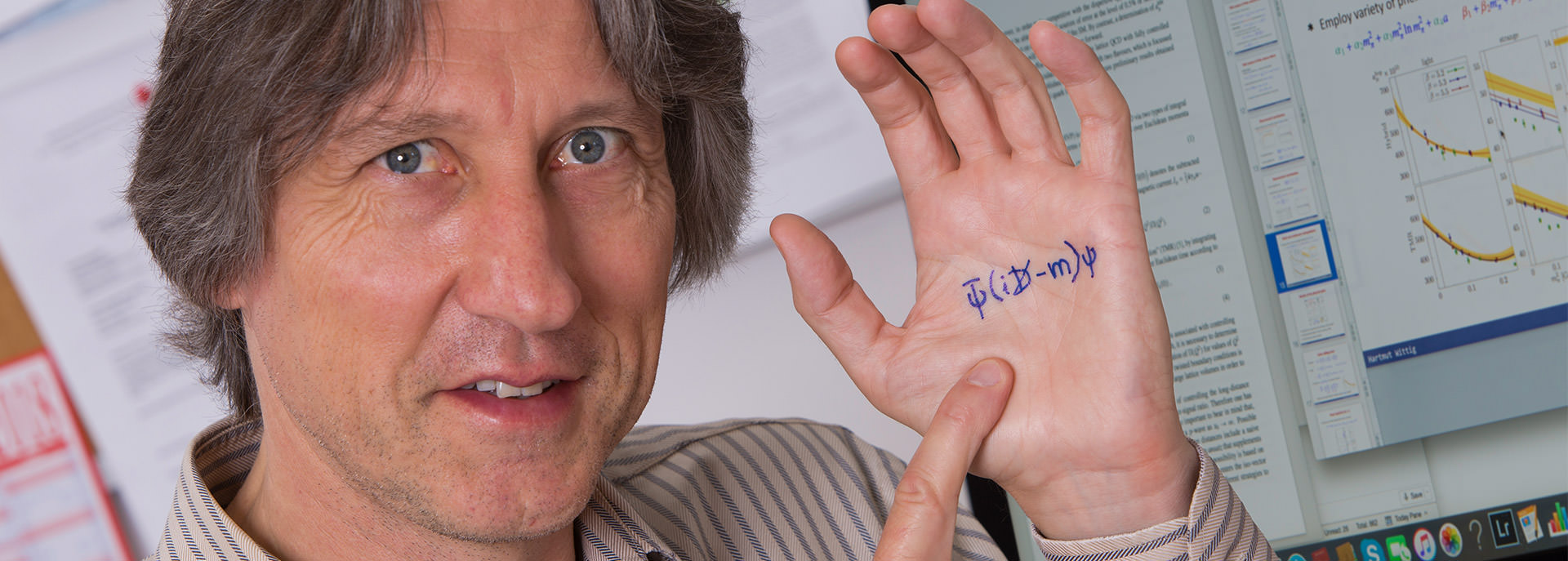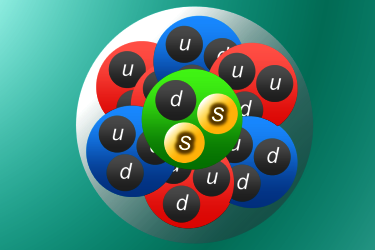To produce such nuclei, a secondary beam of negative K mesons from J-PARC (the Japan Proton Accelerator Research Complex) was directed into a diamond target. Interactions in this diamond block produced in some cases Ξ- hyperons that are made up of two strange quarks and one down quark. These hyperons then entered into a stack of photographic plates. Some of these negative Ξ- hyperons were brought to rest in these emulsion plates and were eventually captured by a nucleus thus forming a Ξ- hypernucleus. Finally, such a hypernucleus decays into several fragments leaving a unique fingerprint in the emulsion. Using an automated track-identification system, the E07 team extracted an event where a Ξ- hyperon was bound to a nitrogen-14 nucleus. By measuring the traces of the decay products with sub-micrometer precision and by a detailed kinematic analysis it was found that the Ξ- hyperon binds to the nitrogen nucleus with an energy of 1.27 MeV.
The first candidate of a doubly strange nucleus was found nearly half a century ago. Since then, only a handful of such nuclei have been observed. In most cases, these hypernuclei contain two hyperons holding one strange quark each, so-called L hyperons. The event observed by E07 is the first Ξ- hypernucleus whose mass could be uniquely determined. As a consequence of the extreme rarity, these truly exotic nuclei are often labelled by their own name. The event observed by the J-PARC E07 team has dubbed IBUKI, which is the name of a mountain on the border of Gifu Prefecture. The precise mass measurements of Ξ- hypernuclei gives information on “strong interaction” between a Ξ- particle and a nucleus, and on underlying interaction between Ξ- particle protons and neutrons. This result is expected to contribute to our understanding of the interior of neutron stars which are often described as giant nuclei.
Shuhei Hayakawa (JAEA), Kazuma Nakazawa (Gifu University) and Josef Pochodzalla (Mainz) for the E07 collaboration
References
[1] S. Hayakawa et al., “Observation of Coulomb-assisted nuclear bound state of Ξ−–14N system,”
Phys. Rev. Lett. 126, 062501 (2021)
https://link.aps.org/doi/10.1103/PhysRevLett.126.062501



